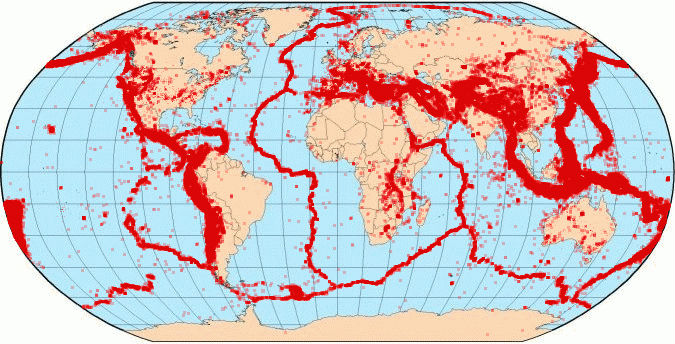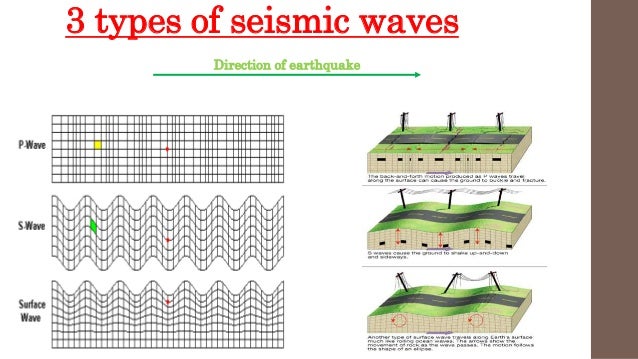

Love waves are the last of those that are seismic. This means that they carry all their energy along the Earth's surface and can cause a large degree of shaking and damage. The circular nature of the motion of surface material means that the ground moves up and down as the Rayleigh wave moves. The effects are much more dangerous than primary and secondary waves since Rayleigh waves are classified as surface waves. The material of the Earth moves along circular paths whilst the wave itself propagates in a direction that is perpendicular to the plane of these circles. Rayleigh waves are created by a combination of transverse and longitudinal motion. The effects of these waves are usually felt shortly after the S-wave has passed. Rayleigh waves are seismic waves that travel at speeds of 80% to 90% of the speed of S-waves. Due to their longitudinal nature, P-waves cause material to compress and expand as they move through the medium. P-waves do not have large amplitudes and so their effects on the ground are not severe and generally do not cause much damage. That is, the material of the medium, through which a P-wave passes, will vibrate parallel to the direction in which the wave is travelling. P-waves can travel through both solid ground and water and travel through the inner core, outer core and mantle. P-waves are body waves since they move along the inner layers of the Earth with a speed of about in water and in granite. This is because P-waves travel the fastest of all waves generated by an earthquake. P-waves or primary waves are usually the first waves to be felt when an earthquake occurs. The first type of seismic wave that we will study is the P-wave.

From the definition of the seismic wave, both surface and body waves carry energy through the Earth. Body waves are seismic waves that travel through the inner layers of the Earth, whereas surface waves travel only along the Earth's surface. These seismic waves can be separated into two broader groups body waves and surface waves. We will discuss four seismic wave types that differ in how they propagate energy and the media through which they move. Seismometers are instruments that can be used to measure the magnitudes of earthquakes by producing a seismogram which can be read to determine the amplitude and intensity of the related seismic waves. This friction can lead to vibrations (disturbances) in the crust which is the source of seismic waves.

The crust is separated into plates that can sometimes move against each other with large amounts of friction occurring between them.

The crust of the Earth is solid rock and lies directly beneath the continents and the oceans. In this article, we will learn about the different types of seismic waves and the energy that is carried by each.


 0 kommentar(er)
0 kommentar(er)
